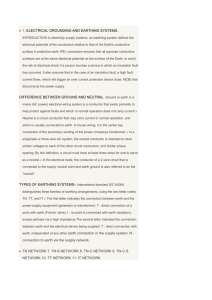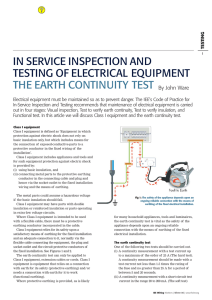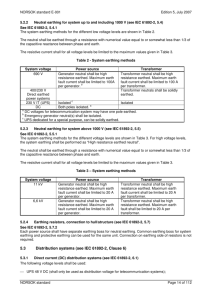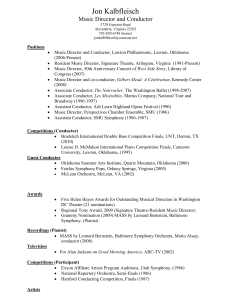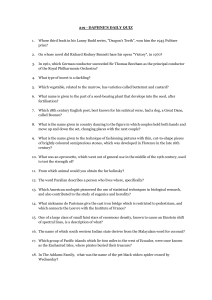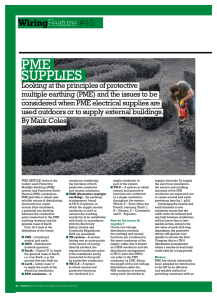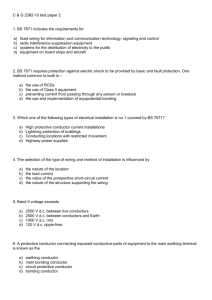3 Types of Distribution Systems According to IEC 60364-1
advertisement
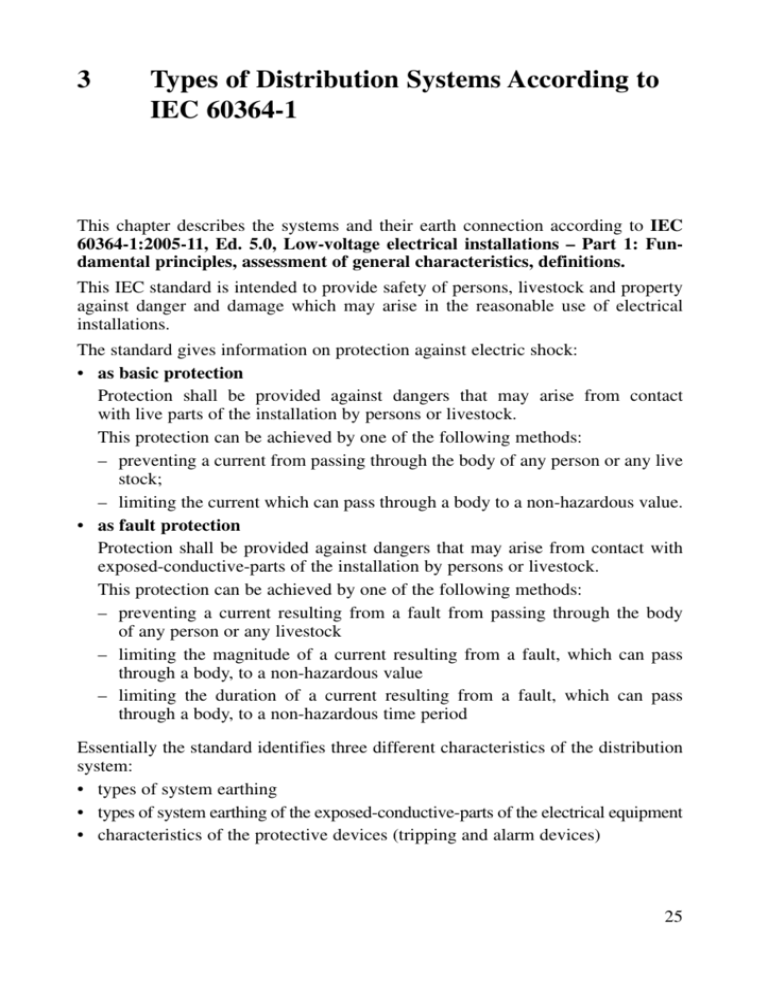
3 Types of Distribution Systems According to IEC 60364-1 This chapter describes the systems and their earth connection according to IEC 60364-1:2005-11, Ed. 5.0, Low-voltage electrical installations – Part 1: Fundamental principles, assessment of general characteristics, definitions. This IEC standard is intended to provide safety of persons, livestock and property against danger and damage which may arise in the reasonable use of electrical installations. The standard gives information on protection against electric shock: • as basic protection Protection shall be provided against dangers that may arise from contact with live parts of the installation by persons or livestock. This protection can be achieved by one of the following methods: – preventing a current from passing through the body of any person or any live stock; – limiting the current which can pass through a body to a non-hazardous value. • as fault protection Protection shall be provided against dangers that may arise from contact with exposed-conductive-parts of the installation by persons or livestock. This protection can be achieved by one of the following methods: – preventing a current resulting from a fault from passing through the body of any person or any livestock – limiting the magnitude of a current resulting from a fault, which can pass through a body, to a non-hazardous value – limiting the duration of a current resulting from a fault, which can pass through a body, to a non-hazardous time period Essentially the standard identifies three different characteristics of the distribution system: • types of system earthing • types of system earthing of the exposed-conductive-parts of the electrical equipment • characteristics of the protective devices (tripping and alarm devices) 25 As a result the following characteristics for the type of distribution system are identified: • type and number of live conductors of the system • type of system earthing The systems are distinguished between a.c. and d.c. systems, with different currentcarrying conductor systems (Table 3.1): a.c. systems d.c. systems Single-phase 2-wire Single-phase 3-wire Two-phase 3-wire 2-wire Two-phase 5-wire 3-wire Three-phase 3-wire Three-phase 4-wire Table 3.1 Earthing systems and their allocated conductor systems 3.1 Types of System Earthing Protective measure always require the coordination between types of system earthing and types of protective devices. IEC 60364-1:2005-11, Ed. 5.0, “Low-voltage electrical installations – Part 1: Fundamental principles, assessment of general characteristics, definitions” describe the types of earthing systems as follows. The various system codes used are derived from the relationship of the distribution system to earth and the relationship of the exposed-conductive-parts of the electrical installation to earth. The codes have the following meaning: First letter – Relationship of distribution system to earth T = direct connection of one point to earth; I = all live parts isolated from earth or one point connected to earth through an impedance. Second letter – Relationship of the exposed-conductive-parts of the installation to earth T 26 = direct electrical connection of the exposed-conductive-parts to earth, independently of the earthing of any point of the power system; N = direct electrical connection of the exposed-conductive-parts to the earthed point of the power system (in a. c. systems, the earthed point of the power system is normally the neutral point or, if a neutral point is not available, a phase conductor). Subsequent letter(s) – Arrangement of neutral and protective conductors S = protective function provided by a conductor separate from the neutral or from the earthed line (or in a. c. systems, earthed phase) conductor C = neutral and protective functions combined in a single conductor (PEN conductor) PE = protective conductor The main distribution systems are: TN system TT system IT system The following clauses describe the types of distribution systems according to IEC 60364-1. 3.2 TN System The standard distinguishes the TN systems between single-source systems and multiple source systems. 3.2.1 Single-Source Systems TN distribution systems have one point directly earthed at the source, the exposedconductive-parts of the installation being connected to that point by protective conductors. Three types of TN systems are considered according to the arrangement of neutral and protective conductors as follows: • TN-S system in which throughout the system, a separate protective conductor is used (Figure 3.1) • TN-C-S system in which neutral and protective conductor functions are combined in a single conductor in a part of the system • TN-C system in which neutral and protective conductor functions are combined in a single conductor throughout the system 27
